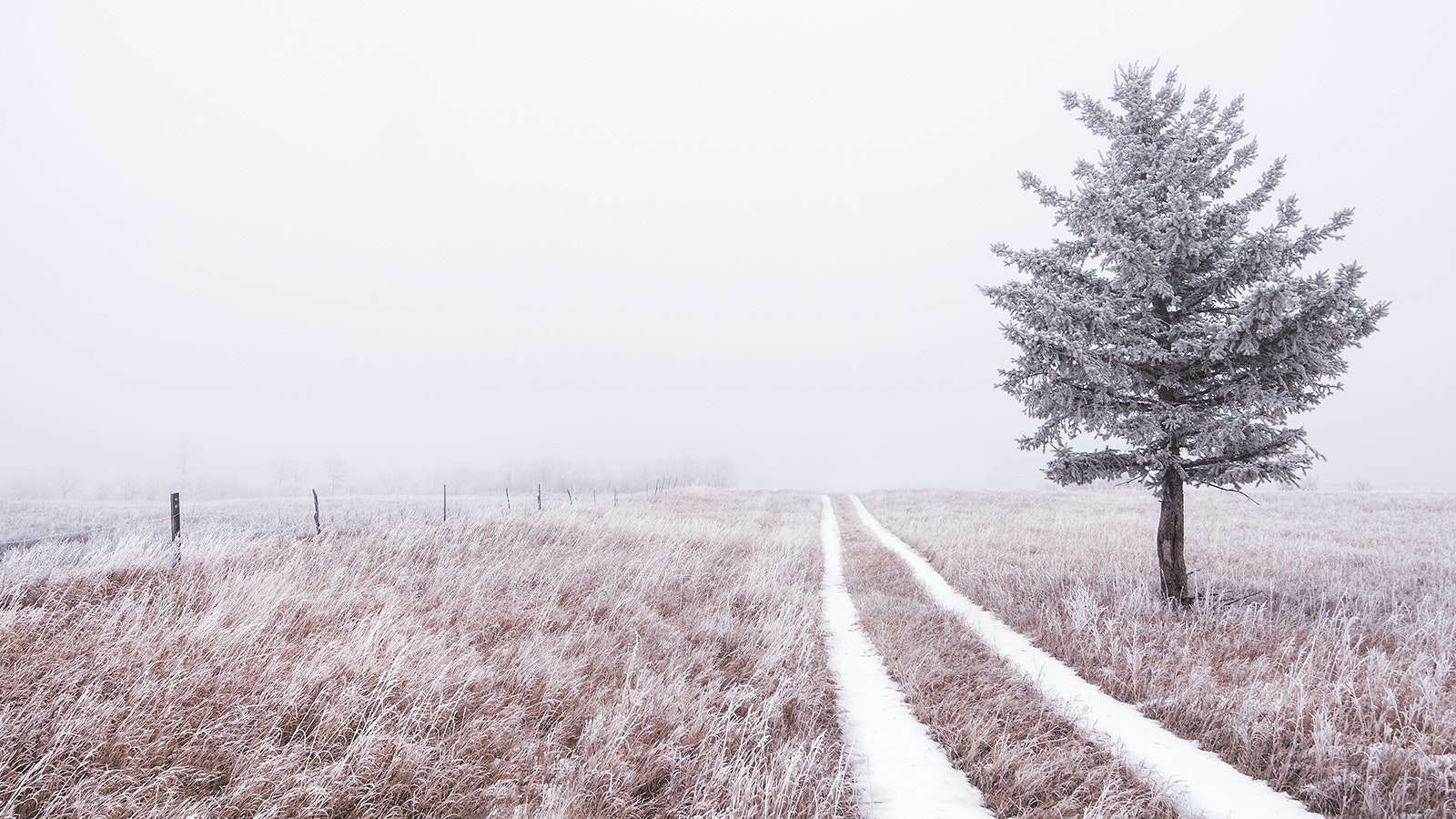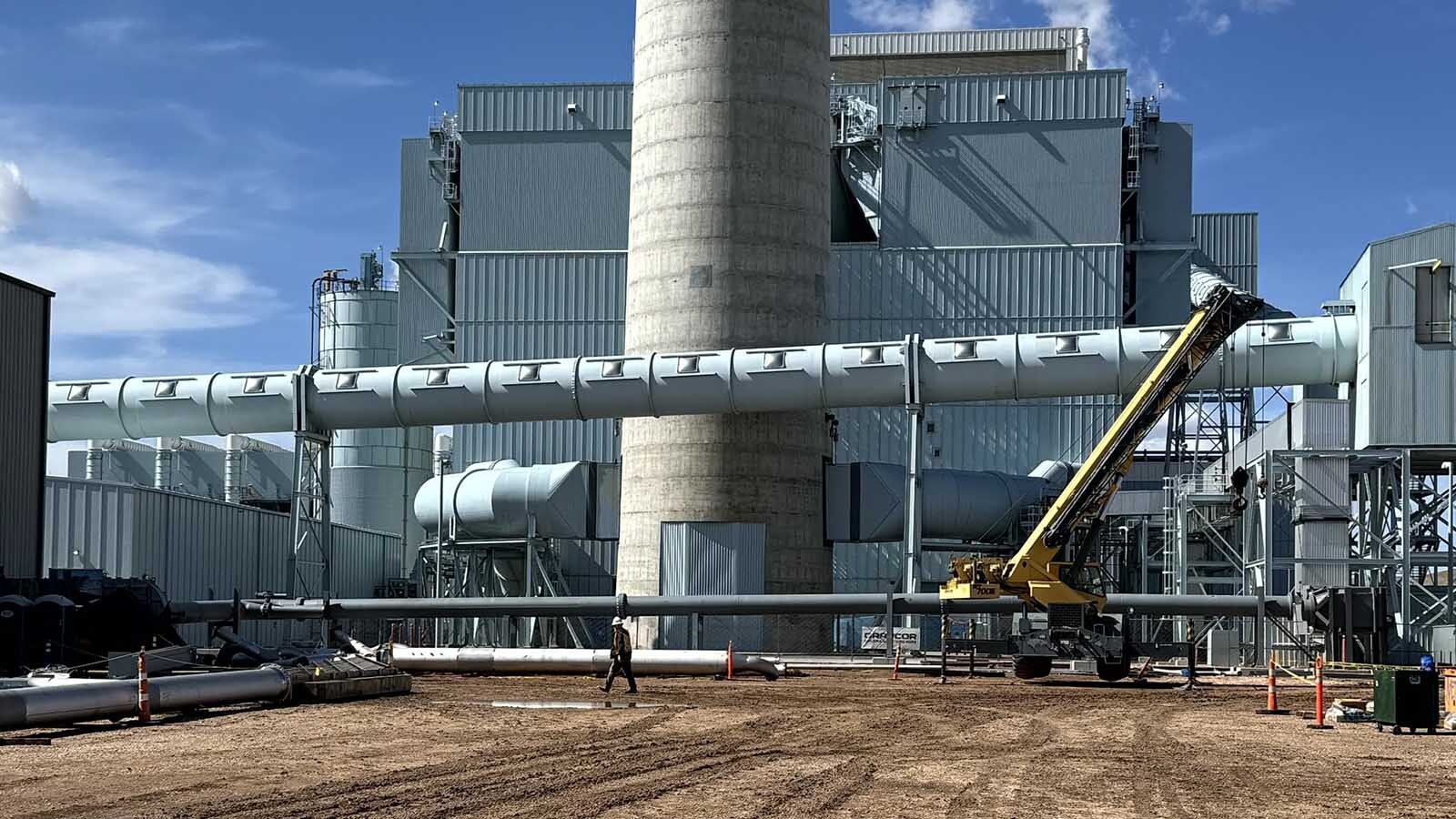The wind at Justine Whitacre’s house can sometimes sound like a freight train in winter.
“It takes up all the sand. It’s like grit on my house paint,” she said. “It’s like my house is being sand-blasted every year.”
Wyoming wind is famous — or perhaps infamous. But Whitacre is located in something of a wind tunnel near Interstate 25.
That has her using primer every spring patch the areas of her home that have been blasted to the wood every winter.
But this year, Whitacre has a different spring activity in mind.
She’ll be working with the Laramie County Conservation Department to plant trees — lots of trees — to protect her home from all that wind.
“It will be a couple of years before the trees are really of any use,” Whitacre said. “But, you know, you have to start somewhere.”
Designing A Windbreak
The Conservation Department helped Whitacre design the windbreak as part of its conservation mission.
An agent came to look at the direction the wind beating on her house was coming from, as well as the soil and habitat around her home.
The department then recommended a windbreak with a fast-growing shrub called Karanga for the outer perimeter, juniper for the middle row, and ponderosa pines for the innermost row facing the house.
Laramie County Conservation Department sells seedlings for windbreak trees at cost, as well as fabric for mulch to control weeds. It also offers participants a list of businesses that can install proper irrigation.
For an additional fee, they’ll even plant the trees, making sure they’re all at correct depths and distances, as well as going into the ground during an optimal timeframe.
“The only caveat is, you have to prepare the area and you have to do your own irrigation,” Whitacre said.
Once Whitacre’s windbreak is growing well, she’ll consider additional plantings to augment the windbreak, for aesthetics.
“Obviously, their primary goal is conservation,” she said.
A River Of Trees
Whitacre’s trees are part of an overall 30 miles worth of trees that will be installed in Laramie County in 2023, according to Clark Young, a tree specialist for the Conservation Department’s Laramie County office.
There are actually two programs to help private landowners, one that builds windbreaks for conservation and the other that installs living snow fences.
That 30 miles will take 60,000 or so seedlings, Young said, which is up over a more usual average of 50,000.
The additional trees that have been bought are mostly for new subdivisions, Young said.
“There’s a lot of new subdivisions everywhere,” he said.
Most of Young’s projects are not inside city limits, though, and that’s mainly because of size restrictions.
The equipment they use is quite large, for one. But the recommendation for windbreaks is to place them about 150 feet from the home they’re meant to protect, while still keeping them 10 feet away from any setbacks. Most in-town lots are too small to accommodate that.
That 150-foot recommendation may seem like a long ways from the home it’s protecting, but that’s based on actual studies of what happens in the field when a row of trees are planted.
The windbreak will cause some drifting, Young said. Trees and shrubs for the windbreak are placed in a stair-step manner at just about the distance where drifts are likely to happen.
That keeps drifts away from the home and helps ensure additional moisture is there to support the windbreak.
What It Takes To Grow A Tree
Growing trees in Wyoming is not so easy.
Outside of certain microclimates like riparian areas, which run alongside rivers and thus have a lot of water, trees don’t naturally take hold.
It takes water — a lot more than most realize — to support a healthy tree.
“When I get called out on tree calls in the summer, you know their lawn looks fantastic, but the tree is dying,” Young said.
When he asks homeowners if they’re giving extra water to the tree, they will generally point to the lawn and say, “Well, no, but my grass is green.”
“Turf requires a lot less water than trees, though,” Young said.
So, despite the green grass, Young’s diagnosis is usually that the tree is suffering from a drought situation.
It’s Hard To Overwater A Tree
The calculation he suggests for a mature tree is at least 10 gallons of water a week for every inch of diameter at chest height.
Based on that calculation, a mature spruce tree, as an example, would need about 100 gallons of water each week.
“Most homeowners are not putting even close to that down for water,” Young said.
Trees don’t need quite as much water in winter, but they do still need some, Young added, particularly if they are pines.
“Anything evergreen doesn’t go dormant,” he said.
Watering in winter is not as important for shrubs, Young said, because most of them are dormant.
“If you can go out, you know, a couple times in the wintertime, if we haven’t gotten any snow, and put some water on your trees, the tree would do a lot better,” he said.
Small Army of Pests Awaits New Trees
Water isn’t the only complication. A small army of insects and mammals, the latter of which get very hungry in winter, await newly planted trees as well.
“We recommend caging your trees, because rabbits really come in and wipe them out,” Young said. “Especially pine trees, because in wintertime, there’s nothing else out there that’s green.”
Deer, squirrels, voles and other small mammals are also inclined to eat tender young trees and shrubs as well and can be active for periods of time during winter as well.
Caging seedlings for their first year will help protect them from all that.
For insects, though, cages obviously are ineffective. What Young recommends there is a little good, old-fashioned scouting.
“Walk your trees and do that several times a year, to keep an eye out for insects,” Young said.
That way, it will be clear if the trees are in trouble.





